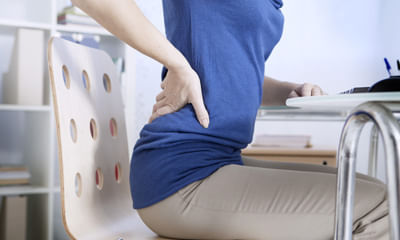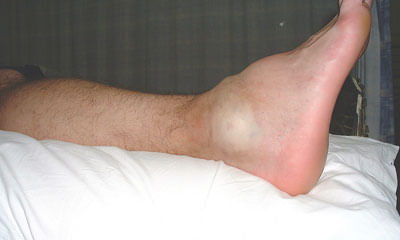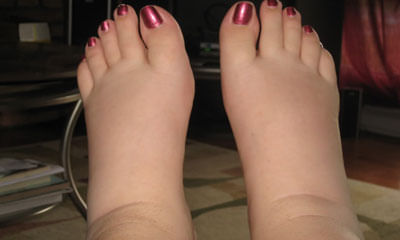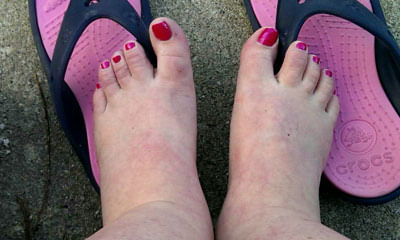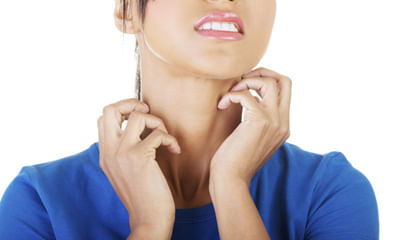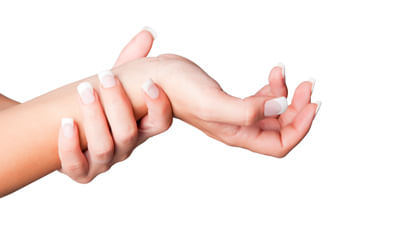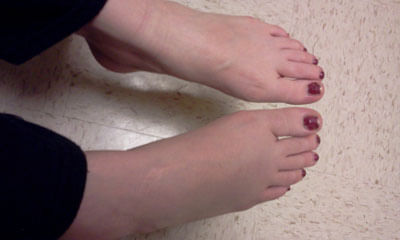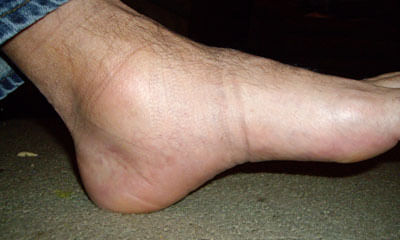Swollen Legs In Pregnancy
I am 28 years female and I am suffering from back pain should I plan for pregnancy? Please help me. ...
Ask Free Question
Because your kidneys are located toward your back and underneath your ribcage, it may be hard to tell if the pain you’re experiencing in that area is coming from your back or your kidney. The symptoms you’re having can help you figure out which is the source of the pain. The location, type, and severity of the pain are some of the things that will be different depending on whether the pain is from a problem in your kidneys or your back. How to identify kidney painkidney pain is most often caused by a kidney infection or a stone in the tubes coming out of your kidney. If the pain is coming from your kidney, it will have these features: where the pain is located kidney pain is felt in your flank, which is the area on either side of your spine between the bottom of your ribcage and your hips. It usually occurs in one side of your body, but it can occur in both sides. Type of pain kidney pain is usually sharp if you have a kidney stone and a dull ache if you have an infection. Most often it will be constant. It won’t get worse with movement or go away by itself without treatment. If you’re passing a kidney stone, the pain may fluctuate as the stone moves. Radiation of the pain sometimes the pain spreads (radiates) to your inner thigh or lower abdomen. Severity of the pain kidney pain is classified according to how bad it is — severe or mild. A kidney stone usually causes severe pain, and the pain from an infection is usually mild. Things that make it better or worse typically, nothing makes the pain better until the problem is corrected, such as by passing the stone. Unlike back pain, it usually won’t change with movement. Accompanying symptoms if you have a kidney infection or a kidney stone, you may also experience: •fever and chills •nausea and vomiting •cloudy or dark urine •an urgent need to urinate •pain when you urinate •a recent infection in your bladder •blood in your urine (this can happen with an infection or kidney stones) •small kidney stones that look like gravel in your urine how to identify back pain back pain is more common than kidney pain and is usually caused by a problem in the muscles, bones, or nerves in your back. Has the following features: where the pain is located back pain can occur anywhere on your back, but it’s most commonly located in your lower back or one of your buttocks. Type of pain muscle pain feels like a dull ache. If a nerve has been injured or irritated, the pain is a sharp burning sensation that may travel down your buttock to your lower leg or even your foot. Muscle pain may affect one or both sides, but nerve pain usually only affects one side. Radiation of the pain nerve pain may spread to your lower leg. Pain from a muscle usually stays in the back. Severity of the pain back pain is described as acute or chronic based on how long you’ve had it. Acute pain lasts days to weeks, subacute pain lasts six weeks to three months, and chronic pain lasts longer than three months. Things that make it better or worse back pain may get worse with movement or if you sit or stand for a long time. It may get better if you switch positions or walk around. Accompanying symptoms other symptoms you may experience with back pain include: •the painful spot looking swollen and feeling tender to the touch •a muscle spasm in the painful area •numbness or weakness in one or both of your legs (if the pain is due to a nerve issue) if you find you have back pain and can’t hold your urine or bowel movements, something is pressing on your spinal nerves, and you should be evaluated immediately. This condition, called cauda equina syndrome, can cause severe long-term damage to your spinal nerves if not treated right away. 6 imbalances that cause pain—and how to fix them "pain is a medical condition and a medical issue, says brett jones, owner of applied strength in pittsburgh who is certified for the functional movement screen, a system of tests and cor rective exercise strategies. "it's a warning sign. The pain is there to tell you something's wrong. And that warning sign could be more serious than "you're going too hard. Jones and the other coaches consulted for this piece all had a horror story to tell-when pain in a client meant a more serious condition such as a nerve issue, thyroid issue, or even cancer. The point: if you experience regular pain while exercising-or when you're not-go to the doctor. If you've been cleared by a doc and you're still feeling discomfort, try these simple tests to see what's truly causing the pain-it could be related to an imbalance in a completely different part of your body. The good news: with these drills, stretches, and corrective exercises, you may be able to fix them-no doctors necessary. Neck pain and headaches? Could be your shoulders. If you're experiencing these symptoms and have been cleared by a doctor, check out the height of your shoulders, says aaron brooks, a biomechanics expert and owner of perfect postures in auburndale, ma. "look in the mirror and see if one shoulder is higher or lower than the other, he says. If one of your shoulders is higher than the other, you'll be strengthening one more than the other, and it may wind up pulled forward more than the other-resulting an inward rotation of that hand. "when you do a row or a press, that side's going to get pinched. There's less room in the shoulder. You can wind up with bursitis or tendonitis. Or headaches and neck pain. Fix it: if the mirror test shows they're uneven, try this single-arm doorway stretch, brooks says. To do it, stand inside the threshold of a door, and place your right forearm inside the door on the right side of the jamb, palm against the jamb at about shoulder height. In this position, twist your chest slightly through the door to stretch your chest-alternately, you can take a step forward with your right foot, keeping your left foot in the threshold. This stretch will open your chest muscles and create room in your shoulder for movement. Pair that stretch with this mid-back strengthening exercise: grab a resistance band and stretch it in front of your chest so that your arms are straight out to the sides from your shoulders, palms facing up. At the full extension of your arms, the band should be stretched out. Return to clap your hands in front, and repeat the movement. Pair these two moves-in this order-three times per week. Shoulders even? Your headaches could be from a forward-leaning head. If you don't see an imbalance in the height of your shoulders, turn to the side, says robert taylor, owner of smarter team training in baltimore. If your head is jutting far forward of your shoulders, it could ultimately decrease the amount of blood flow to your head and neck. "the head leans forward, the spine leans forward, and it puts unnecessary stress on the lower spine too, he says. With the decreased blood flow to your thinking cap, you could get headaches. Fix it: increase blood flow up top and return your head to its natural, up-tall position by strength training your neck, taylor says. Try this one-arm shrug to even things out: sit on an upright bench, like one you'd use for a shoulder press. Holding a dumbbell in your right hand, place your left hand under your left butt cheek and grab the side of the seat. Let your right hand hang down straight by your side and pull your shoulder blades back and together. Now raise your right shoulder up towards your ear-raise it straight up instead of rolling your shoulder. Hold for a beat at the top, and then return to the start position. Complete a set of 10, and repeat on the other side. Knee pain when you run? Could be your hips. "the knee has two bad neighbors-the hip and the ankle, jones says. The pain you feel in your knee could very well be tightness or immobility in those bad neighbors. "they sweep all their leaves into the knee's yard. Everyone blames the knee, but it's the neighbors. To see if your hips have a proper level of mobility, lay on your back in a doorway so that the middle of your kneecap is right on the threshold. Relax your arms at your sides, palms up. Bring your feet together, toes pointed at the ceiling. Pull your toes towards your shins to create a 90-degree angle at the ankle. Keep one leg straight and still as you slowly raise the other leg until either your knee bends on your raising leg, or your bottom foot bends or turns out to the side. "see if the knobby part of your ankle can make it past the door frame, jones says. If it does, your hips are plenty mobile-check the ankle test below to see if that's causing some knee issues. If either ankle can't make it, foam roll your hips and glutes, and then work on this stretch using a belt or strap for instant improvement. Fix it: lying in the same position as during the test, wrap a strap or belt around one foot and raise it until you just start to feel a stretch-not to the level where it's all the stretch you can take, but just the beginning of the stretch, jones says. Once here, bring your other leg up to meet it. Return the non-strapped leg to the floor. At this point, you may find that the strapped leg can come up a little higher. When it does, bring the non-strapped leg up to meet it again. Continue until you no longer feel progress in the strapped leg, and switch. Hips moving ok? Check your ankles. If your hips are mobile (and even if they're not), ankle mobility can also lead to knee pain, says mike perry, owner of skill of strength in north chelmsford, mass. Who is certified in the functional movement screen. To see how mobile your ankles are (or aren't), assume a one-knee position facing a wall. Your knees should both form 90-degree angles, and the toe of your planted foot should be about four inches from the wall. In this position, perry says, try to glide your knee over the pinky toe to touch the wall without lifting your heel. If you can reach the wall, your ankle is gliding correctly. If your foot comes up before your knee touches the wall, your calves are "incredibly tight, perry says. Fix it: to help remedy this issue, foam roll your calves and try this variation on that ankle test from brett jones. Assume the same half-kneeling position, and place the point of a broomstick on the pinky toe of your planted foot. Hold the stick so it's touching the outside of your knee. With the stick in this position, keeping your knee from flaring out to the side, glide the knee forward slowly, stopping when your heel leaves the ground. If you perform this as a drill, jones says, you can see as much as half an inch of improvement in the first session. If you feel pain during the drill, stop and consult a physician. Lower-back tightness? Might be your hips. As with knee pain, back discomfort often isn't a back problem at all, brooks says. If one side of your pelvis is higher than the other, it can result in back pain, hip pain, groin pain, or even knee pain. "if you try to do a lunge, the knee on the high side will cave in and the hip will angle inward, brooks says. The repercussions of this change over time can be knee pain, a patella tear, a medial meniscus injury, or hip bursitis. But back to your back-the unevenness of your hips can pull on your lower back, causing that tightness while sitting all day. Fix it: if you notice your hips are uneven, try this hip abduction exercise. Lie on your back with knees bent and feet flat on the floor, hip-width apart (the classic sit-up position). Wrap a small resistance band around your knees so that it's already a little tight while your knees are together. Now press out against the strap to separate your knees until they form a v-shape, holding at the outermost edge of the press for a few moments. This move helps to fix the hip imbalance because "in the lying position, the muscles that are causing the pelvis to be out of alignment are shut off, brooks says. Repeat for 2 sets of 20 reps, 3 times per week. Tail bone pain the lower end of the vertebral column is inflamed and that bone is called coccyx bone and the condition is called coccydynia. The conservative management would be to keep ice in that inflamed area during one time in a day and also to sit in a hot water bowl where the penetration of the heat would help to reduce the inflammation. And to reduce the weight falling on the inflammed surface we suggest patients to use air cushion pillow (also called as doughnut pillow) where in the buttock's weight will not fall exactly on the painful tail bone and that would automatically reduce the pain. For this the best treatment would be to undergo ultrasonic therapy in one of the nearby physiotherapy clinics.
My right side ankle is swelling and it looks like the bone is going outward. While touching ankle it feels like there is ...
Ask Free Question
Home care to treat a swollen ankle or leg at home, remember the acronym rice: rest. Stay off your ankle or leg until you can get to the doctor or until the swelling goes away. Ice. Put ice on the swollen area as soon as you can for 15 to 20 minutes. Then repeat every three to four hours. Compression. Wrap your ankle or leg snugly, but be sure not to cut off circulation. Support stockings may be an option. Elevation. Raise your ankle or leg above your heart (or as far above your heart as possible). Two pillows will usually give you the correct elevation. This encourages fluid to move away from your leg. Medical treatment if you seek medical attention, your physician will likely determine what’s causing your symptoms. Testing may include: blood tests an x-ray an electrocardiogram urinalysis if the swelling is caused by a medical condition such as congestive heart failure, the doctor may prescribe diuretics. These medications affect the kidneys and stimulate them to release fluids. If an ongoing medical condition such as rheumatoid arthritis is the root of the problem, your treatment may turn into management and prevention of that condition. Swelling due to injury may require bone resetting, a cast, or surgery to repair the injured area. For swelling that’s painful, a doctor may prescribe a pain reliever or over-the-counter anti-inflammatory medication, such as ibuprofen (advil) or naproxen sodium (aleve). Mild swelling from pregnancy or a mild injury usually goes away on its own after delivery of the baby or with sufficient rest. After treatment, you should contact your doctor if: your swelling gets worse you have breathing difficulty or chest pain you feel dizzy or faint exercise precautions while you can’t always prevent injuries during physical activity, warming up first can help. This includes a walk or light jog before engaging in vigorous physical activity. Choose supportive footwear. Proper shoes can help correct any gait issues and prevent injuries. You should choose shoes that match your activity or your specific needs. If you jog or run, get fitted by a professional for the correct shoe. Compression socks compression socks apply pressure to your lower leg. In some cases, this can help prevent and alleviate ankle and foot swelling caused by certain conditions, such as: deep vein thrombosis lymphedema varicose veins venous insufficiency you should check with your doctor before using compression socks for your swelling. These special socks should be properly fitted for you and your needs. Also, be sure to wear them during the day and remove them before you go to bed. Leg elevation.
I am diwas sarki I am getting swelling because of burn with plastic in my ankle from last 3 days. ...
Ask Free Question
To treat a swollen ankle or leg at home, remember the acronym rice: rest. Stay off your ankle or leg until you can get to the doctor or until the swelling goes away. Ice. Put ice on the swollen area as soon as you can for 15 to 20 minutes. Then repeat every three to four hours. Compression. Wrap your ankle or leg snugly, but be sure not to cut off circulation. Support stockings may be an option. Elevation. Raise your ankle or leg above your heart (or as far above your heart as possible). Two pillows will usually give you the correct elevation. This encourages fluid to move away from your leg. Medical treatment if you seek medical attention, your physician will likely determine what’s causing your symptoms. Testing may include: blood tests an x-ray an electrocardiogram urinalysis if the swelling is caused by a medical condition such as congestive heart failure, the doctor may prescribe diuretics. These medications affect the kidneys and stimulate them to release fluids. If an ongoing medical condition such as rheumatoid arthritis is the root of the problem, your treatment may turn into management and prevention of that condition. Swelling due to injury may require bone resetting, a cast, or surgery to repair the injured area. For swelling that’s painful, a doctor may prescribe a pain reliever or over-the-counter anti-inflammatory medication, such as ibuprofen (advil) or naproxen sodium (aleve). Mild swelling from pregnancy or a mild injury usually goes away on its own after delivery of the baby or with sufficient rest. After treatment, you should contact your doctor if: your swelling gets worse you have breathing difficulty or chest pain you feel dizzy or faint exercise precautions while you can’t always prevent injuries during physical activity, warming up first can help. This includes a walk or light jog before engaging in vigorous physical activity. Choose supportive footwear. Proper shoes can help correct any gait issues and prevent injuries. You should choose shoes that match your activity or your specific needs. If you jog or run, get fitted by a professional for the correct shoe. Compression socks compression socks apply pressure to your lower leg. In some cases, this can help prevent and alleviate ankle and foot swelling caused by certain conditions, such as: deep vein thrombosis lymphedema varicose veins venous insufficiency you should check with your doctor before using compression socks for your swelling. These special socks should be properly fitted for you and your needs. Also, be sure to wear them during the day and remove them before you go to bed. Leg elevation if you stand a lot during the day, try propping your feet up or soaking them in water when you get home to help prevent swelling. Muscle relaxant: reduces muscle tension and helps relieve muscle pain and discomfort. Transcutaneous electrical nerve stimulation (also known as tens) is something which helps ease muscle pain and spasms. You can strengthen the muscles by doing tonification ie. Improving the tone of the muscles by adding either weight cuffs / sand bags which will help you to improve the strength of the muscles.
Why my mother leg get swollen while she is standing for long hours and sometimes it also pains. ...
Ask Free Question
Pain in the right legif you have leg pain please check your body weight and your hemoglobin levels, as anemia always leads to the symptoms of being tired and also having leg pain though there may not be any pathological reasons for back pain. My suggestion would be to wear mcr chapels which will help you to prevent the weight falling on the if you have back pain while walking and standing first of all check your weight and your hemoglobin levels, as anemia always leads to the symptoms of being tired and also having back pain though there may not be any pathological reasons for back pain. My suggestion would be to wear mcr chapels which will help you to prevent the weight falling on the back. And also should check whether you have flat foot on the right leg that also might be the reason to have pain in one particular legdo contrast bath ie. Take two tubs in one you can fill hot water (ie. Bearable heat) to immerse the feet in the tub and you will have good effect ie. Warmth effect. Further to that wipe with towel and immerse the feet in the cold water (ie. Ice water bath) which will help you to reduce the inflammation. Once this is done you can do some ankle movements to both the feet which will help you to boost and improve the blood circulation. As I said over the phone please use anklet which I have already sent by whats app and you can use mcr chappals which will help you to reduce the weight falling on the injured front portion of the foot. If you have the habit of using shoes then you can keep removable insoles which can be used inside the shoes and that acts like a shock absorber and which will also help to reduce and prevent the weight falling on the injured foot. This is the way to reduce the inflammation through home remedy. If the pain persists say for example after doing for 5-7 days then you have to consult physiotherapist where they will treat you with infra red radiation. But this is quite a rare treatment, if in case it is not available, let me know we can send it to you by courier. It is quite expensive but you will feel good results with that. This will help you to reduce the inflammation in the bone ie. Which is caused by the table which fell on your foot. You can thrombophob ointment to reduce the contusion and also to loosen and break the blood clot which is there in the front portion of the foot. It will also help you to change the skin colour. If the pain is too much then you can take ultracet tablet every day in the night. Keep two pillows under the ankle while sleeping on the bed which will help you to reduce the swelling. Hope you recover with this. And also please share your feed back if you become better. If you do not become better too pls let us know so that we can give some alternate solution. Please send your address so that we can send the products ie. Anklet to use it in the ankle / foot, mcr chappals for your size and also the removable foot insole.
Swollen ankles and feet below feet. Occasional pain. I weigh 75 kg and am 26 years old female. ...
Ask Free Question
Home care to treat a swollen ankle or leg at home, remember the acronym rice: rest. Stay off your ankle or leg until you can get to the doctor or until the swelling goes away. Ice. Put ice on the swollen area as soon as you can for 15 to 20 minutes. Then repeat every three to four hours. Compression. Wrap your ankle or leg snugly, but be sure not to cut off circulation. Support stockings may be an option. Elevation. Raise your ankle or leg above your heart (or as far above your heart as possible). Two pillows will usually give you the correct elevation. This encourages fluid to move away from your leg.
Hi my father is 71 year old his feet swollen frm lst 6 days n swelling is not going before that he was having cold n cou ...
Ask Free Question
Leg swelling generally occurs because of an abnormal accumulation of fluid in the tissues of the lower extremity. Common causes of leg swelling include idiopathic edema (swelling of unknown cause), overweight, is older, salt retention, cellulitis, congestive heart failure, venous insufficiency, pregnancy, and medication side effects. Some tips that may help reduce swelling: 1.Put your legs on pillows to raise them above your heart while lying down. 2.Exercise your legs. This helps pump fluid from your legs back to your heart. 3.Follow a low-salt diet, which may reduce fluid buildup and swelling. 4.Wear support stockings (sold at most drugstores and medical supply stores). 5.When traveling, take breaks often to stand up and move around. 6.Avoid wearing tight clothing or garters around your thighs. 7.Lose weight if you need to.
Hello. My mom is suffering from itching and burning sensation (jalan) on head and below foot. It is happening more when ...
Ask Free Question
Is her bp under control. Or us she diabetic. Leg swelling generally occurs because of an abnormal accumulation of fluid in the tissues of the lower extremity. Common causes of leg swelling include idiopathic edema (swelling of unknown cause), overweight, is older, salt retention, cellulitis, congestive heart failure, venous insufficiency, pregnancy, and medication side effects. Some tips that may help reduce swelling: 1.Put your legs on pillows to raise them above your heart while lying down. 2.Exercise your legs. This helps pump fluid from your legs back to your heart. 3.Follow a low-salt diet, which may reduce fluid buildup and swelling. 4.Wear support stockings (sold at most drugstores and medical supply stores). 5.When traveling, take breaks often to stand up and move around. 6.Avoid wearing tight clothing or garters around your thighs. 7.Lose weight if you need to.
Sir my mother is 42 years old. Her left leg has swollen for years .day by day the swelling has been increased to whole l ...
Ask Free Question
Leg swelling generally occurs because of an abnormal accumulation of fluid in the tissues of the lower extremity. Common causes of leg swelling include idiopathic edema (swelling of unknown cause), overweight, is older, salt retention, cellulitis, congestive heart failure, venous insufficiency, pregnancy, and medication side effects. Some tips that may help reduce swelling: 1.Put your legs on pillows to raise them above your heart while lying down. 2.Exercise your legs. This helps pump fluid from your legs back to your heart. 3.Follow a low-salt diet, which may reduce fluid buildup and swelling. 4.Wear support stockings (sold at most drugstores and medical supply stores). 5.When traveling, take breaks often to stand up and move around. 6.Avoid wearing tight clothing or garters around your thighs. 7.Lose weight if you need to.
I am experience swollen feet, hands and knee pit for almost a month now. Earlier I thought that happened due to heat (i ...
Ask Free Question
Edema can be result of medication pregnancy or an underlying disease often congestive heart failure kidney or cirrhosis of liver sign of inflammation of tissues or joint of hand result of serious infection trauma or abnormal processes
My grandmother is 80 years old .her legs get swollen every time what is a problem and which medicine should I take. ...
Ask Free Question
Leg swelling generally occurs because of an abnormal accumulation of fluid in the tissues of the lower extremity. Common causes of leg swelling include idiopathic Edema (Swelling of Unknown Cause), overweight, Is older, salt retention, cellulitis, congestive heart failure, venous insufficiency, pregnancy, and medication side effects. Some tips that may help reduce swelling: 1. Put your legs on pillows to raise them above your heart while lying down. 2. Exercise your legs. This helps pump fluid from your legs back to your heart. 3. Follow a low-salt diet, which may reduce fluid buildup and swelling. 4. Wear support stockings (sold at most drugstores and medical supply stores). 5. When traveling, take breaks often to stand up and move around. 6. Avoid wearing tight clothing or garters around your thighs. 7. Lose weight if you need to.

